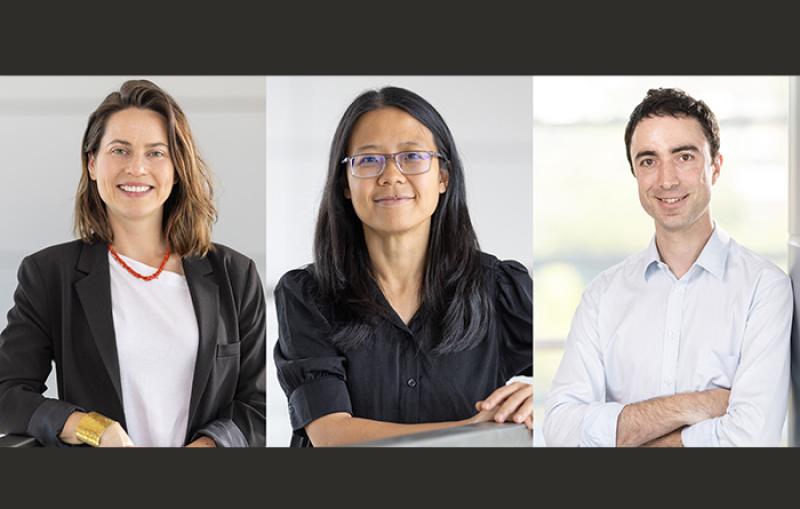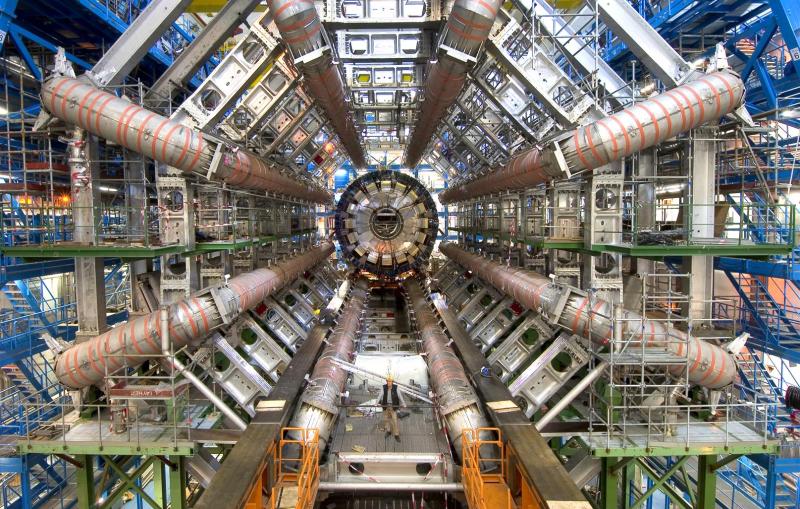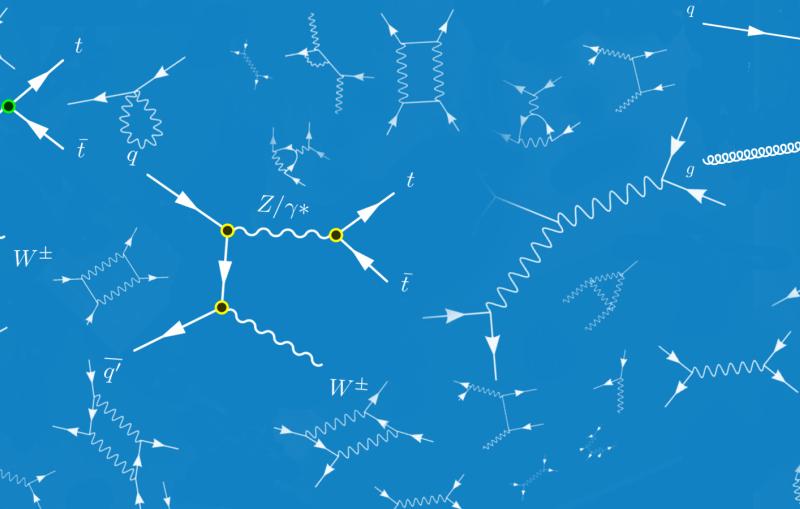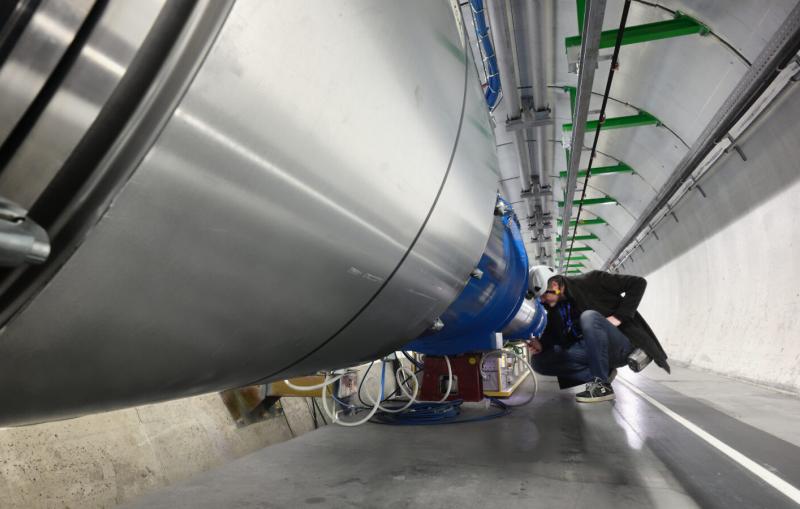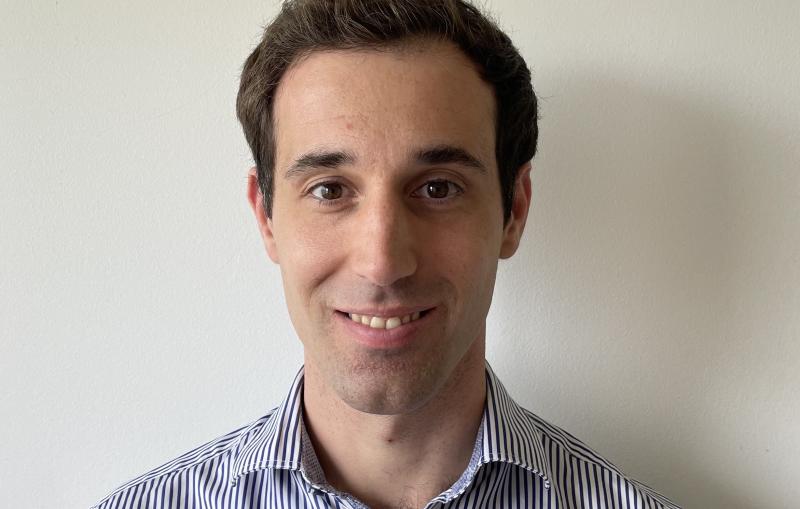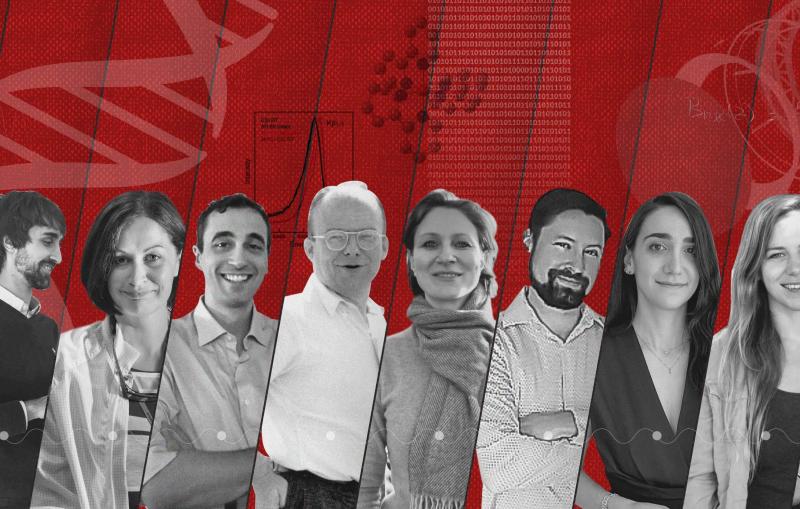Kelly Stifter and Julia Gonski awarded 2023 Panofsky Fellowships at SLAC
They’ll work on experiments searching for dark matter and physics beyond the Standard Model of particle physics to push our understanding of what makes up the universe.
By Chris Patrick
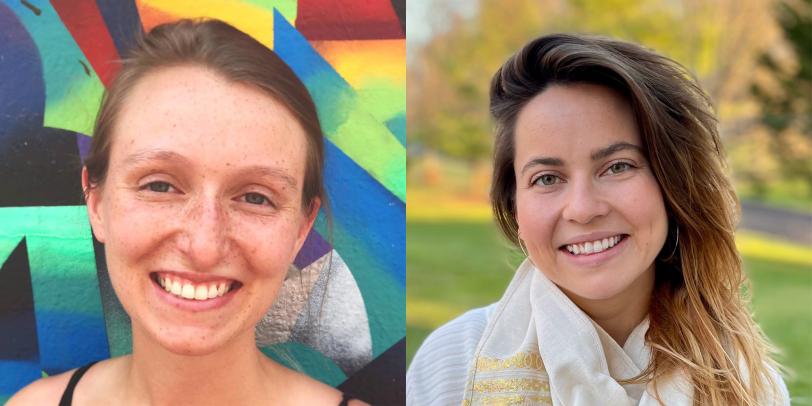
Kelly Stifter and Julia Gonski have been named 2023 Panofsky Fellows at the Department of Energy's SLAC National Accelerator Laboratory. Stifter will turn to quantum sensors to enhance the sensitivity of detectors hunting for dark matter, while Gonski will use machine learning tools to scour data from particle collisions in search of physics beyond the Standard Model.
The Panofsky Fellowship, named after SLAC's founder and first director Wolfgang K. H. "Pief" Panofsky, recognizes exceptional early-career scientists who would most benefit from the opportunity to do their research at the lab. It provides generous funding for five years of research and an opportunity for continuing appointment at SLAC.
Kelly Stifter
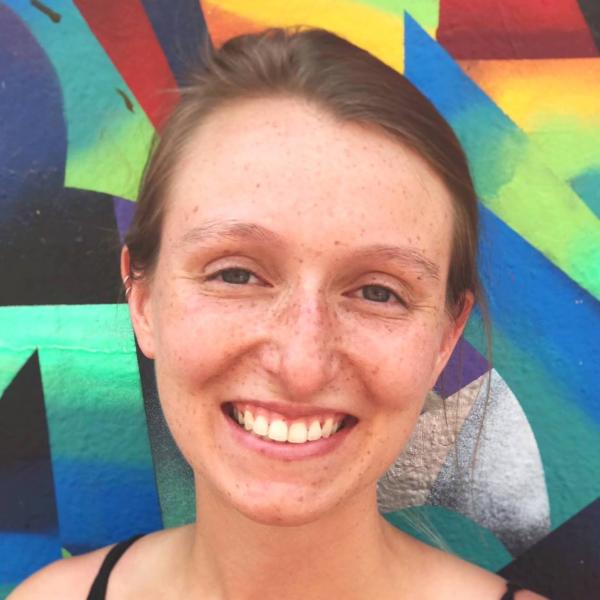
Quantum information science for dark matter
Kelly Stifter has known she wanted to be an astrophysicist since she was in seventh grade.
"I’ve always been fascinated by the universe and how it works," she said. It started at three years old with her poring over pictures of stars and planets in a big book and stargazing with her grandma.
So naturally, as an undergraduate at the University of Minnesota Twin Cities, she thought she’d major in astrophysics. However, Stifter enjoyed the hands-on work of physics labs so much she ended up majoring in physics instead.
"I really liked the opportunity to build things, break things, fix things, try again," she said. Stifter continued this process during several undergraduate research experiences, including a stint at CERN working on detector hardware for the CMS experiment at the Large Hadron Collider (LHC).
"It was a valuable experience for me as an undergrad to get to be in the middle of all of the action," she said.
As a grad student at Stanford University, Stifter found her way back to astrophysics. During a rotation to test out different labs at SLAC, she began working with professors Daniel Akerib and Thomas Shutt – her eventual PhD advisors – on the LZ experiment, which is searching for dark matter, the invisible form of matter that has not yet been detected even though measurements show it makes up over 80 percent of matter in the universe.
Stifter helped develop hardware for LZ, including a large-scale liquid xenon circulation system and high voltage electrodes.
"I loved the fact that I got to work in the lab, crawling around, getting my hands dirty every single day," she said. She also contributed to analysis of the experiment’s first data and the first dark matter search results. Inspired by the work, Stifter has been stuck on dark matter since.
As a postdoc at Fermi National Accelerator Laboratory, she worked on the SENSEI dark matter experiment, and also started to explore the use of quantum sensors in detecting dark matter. The unparalleled sensitivity of quantum devices will allow scientists to pick up even fainter whispers of these elusive particles.
"Quantum sensors may expand the range of dark matter we can detect by orders of magnitude," she said.
When she returns to SLAC this October, Stifter will draw on the quantum device calibration system she developed at Fermilab to build full-scale quantum detectors. She’ll work closely with Noah Kurinsky, a SLAC staff scientist who has been designing quantum sensors for dark matter detection. The two will lead the newly formed Dark Matter Quantum Information Science group at SLAC.
"I'm so excited to be a part of this new frontier," Stifter said.
She’ll split her time between her quantum sensor work and SuperCDMS, a SLAC-led dark matter experiment that’s currently under construction. As its turn-on date draws closer, Stifter will contribute to the experiment’s construction, commissioning, and data analysis.
She hopes to one day have a hand in confirming dark matter’s existence.
"I love the prospect of trying to find something that nobody has ever seen before," she said.
But even if dark matter isn’t detected soon, Stifter is happy she’ll be back at SLAC, which she calls a "powerhouse" in the field of dark matter. She also appreciates the active community at SLAC.
"This is my dream job," she said. "I think seventh grade me would be looking at current me with excitement knowing that this is what's coming."
Julia Gonski
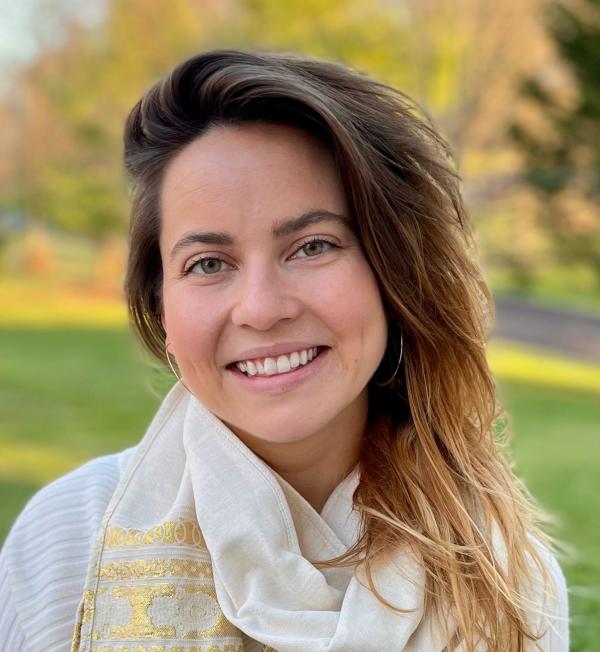
Machine learning for new physics
Julia Gonski’s fixation on particle physics started with a high school chemistry class. When she was taught that protons, neutrons, and electrons are the major players in atoms, she assumed that was the whole kit and caboodle regarding matter. So when she read a book that revealed protons and neutrons are actually made up of smaller particles called quarks, her worldview was shaken.
"There was this whole other story," she said. "It got me thinking, 'How far down does it go?'"
Since then, Gonski has wanted to get to the bottom of what makes up our universe. She walked into her first day of undergrad at Rutgers University knowing she wanted to work on experiments at the LHC – and has been doing so ever since.
First, she analyzed data from the CMS experiment in search of support for the theory of supersymmetry, which predicts every particle in the Standard Model has a partner particle, an idea that would fix some existing inconsistencies.
Then she spent the summer of 2013 in Switzerland at CERN, home of the LHC. Gonski was working on measurements of the Higgs boson in the aftermath of its discovery by the ATLAS experiment.
"CERN was vibrating. People were so excited and passionate," she said. "And I was over the moon. I just fell in love with it." (The nearby skiing helped too, she said.)
In graduate school at Harvard University, Gonski continued to search for supersymmetry. Though she didn’t find evidence for that theory, she remains dedicated to finding new physics beyond the Standard Model.
"We know there has to be new physics," she said. "We don't have a complete model."
For her postdoc at Columbia University, she decided to try a different kind of search using machine learning models, which can navigate complexities of collider datasets to solve the trickiest analysis problems. Instead of looking for specific signs of supersymmetry, she used machine learning to search for anything that sticks out or appears anomalous in ATLAS data.
For her fellowship, Gonski will join SLAC’s ATLAS group and continue using this so-called anomaly detection usage of machine learning to mine datasets in a more general way for any kind of weird signature that could indicate physics beyond the Standard Model.
"I want to bring this application of machine learning to the SLAC group and build out the types of beyond-the-Standard-Model searches that are being done," Gonski said. She'll also study applications of machine learning to ATLAS detectors and data collection, and work on developing novel detectors for future colliders.
These future colliders, and what they may discover about the universe, excite her the most.
"I'll be on the subway thinking about what kind of machine we'll build in 50, 60 years and what we’ll learn," she said. "I feel this incredible sense of relief and excitement that I can finally implement all the things that I’ve been thinking about doing for so long. I'm very ready to hit the ground running."
Gonski loves the collaborative spirit of particle physics, whose large-scale projects require people from around the world to work together but has also recently started to dabble with interdisciplinary collaboration. She believes SLAC will be a great place to make new connections across fields.
"SLAC is a really broad lab with experts in all kinds of DOE-related sciences," Gonski said. "The potential for cross-field synergy really excites me, and those conversations can just happen from crossing each other on campus."
For questions or comments, contact the SLAC Office of Communications at communications@slac.stanford.edu.
About SLAC
SLAC National Accelerator Laboratory explores how the universe works at the biggest, smallest and fastest scales and invents powerful tools used by researchers around the globe. As world leaders in ultrafast science and bold explorers of the physics of the universe, we forge new ground in understanding our origins and building a healthier and more sustainable future. Our discovery and innovation help develop new materials and chemical processes and open unprecedented views of the cosmos and life’s most delicate machinery. Building on more than 60 years of visionary research, we help shape the future by advancing areas such as quantum technology, scientific computing and the development of next-generation accelerators.
SLAC is operated by Stanford University for the U.S. Department of Energy’s Office of Science. The Office of Science is the single largest supporter of basic research in the physical sciences in the United States and is working to address some of the most pressing challenges of our time.
